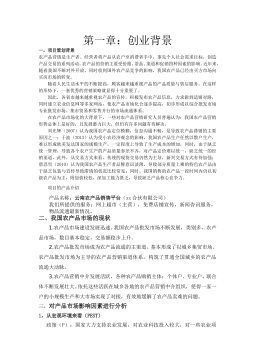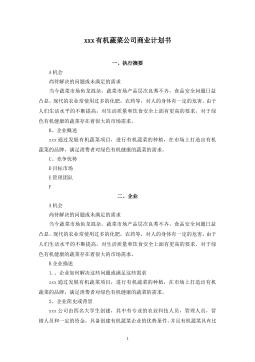乳酸钠对铜绿假单胞菌的抑制作用及其在冷却猪肉防腐中的应用
VIP免费
乳酸钠对铜绿假单胞菌的抑制作用及其
在冷却猪肉防腐中的应用
摘要
防腐一直是食品工业发展的关键问题,添加合成防腐剂作为主要的防腐方法之
一,近年来不断受到质疑。2006年英国食品标准局发布某些软饮料中的食品防腐剂
——苯甲酸钠与维生素C可能产生致癌物质。因此,寻找安全高效的食品防腐剂成
为当前食品科学的热点问题之一。
乳酸钠作为一种高效、稳定、安全的食品添加剂,其在食品防腐方面的研究近
年来时有报道,尤其是关于冷却肉及肉制品的防腐。铜绿假单胞菌(Pseudom
onas Aeruginosa)是冷却猪肉中的优势腐败菌之一,以铜绿假单胞菌为指示菌研究
乳酸钠对冷却猪肉及肉制品的防腐保鲜作用是目前研究热点之一。本研究围绕抑菌
保鲜展开如下试验:
(1)以腐败冷却猪肉为铜绿假单胞菌菌源体,经纯化培养、观察菌落形态、
革兰氏染色实验、氧化酶实验、过氧化氢酶实验、精氨酸双水解酶实验初步鉴定出
目标菌(P12、P18)为铜绿假单胞菌。将P12、P18接种在营养琼脂培养基上培养
培养基表面出现浓绿素,表明该株细菌为铜绿假单胞菌。
(2)探讨乳酸钠对铜绿假单胞菌的特定抑制作用,揭示介质pH值水平影响乳
酸钠抑菌效果的规律,为复合防腐剂配方优化提供依据。试验以营养肉汤培养基为
介质,按照乳酸钠质量浓度(0.0%、0.2%、0.5%、1.0%、1.5%、2.0%(W/
V))、 pH值(4.00~6.20)的单因素/两因素试验设计,25.0 ℃恒温培养。结果表
明,当介质初始pH4.80,等质量浓度的乳酸钠较氯化钠抑菌效果好,差异极显著
(P<0.01),乳酸钠质量浓度越高抑菌效果越好( 2.0%>1.0%>0.5%); pH值
水平对乳酸钠抑菌效果影响较大,pH值越低抑菌效果越好,试验得出的临界抑菌
pH值为生产实践中乳酸钠有效质量浓度选择提供依据。
(3)为验证营养肉汤培养基的研究结果,试验以冷却猪肉为营养基质展开研
究。结果表明,乳酸钠对冷却猪肉(8.0 ℃)具有良好的防腐保鲜效果,低浓度
(<2.0%,W/W)NaCl不利于该温度下猪肉的保藏。乳酸钠浓度越高抑菌效果越
好,维持良好肉色的能力越强,感官评分较高;相反,一定浓度的NaCl有利于铜
绿假单胞菌生长,同时,作为亲氧因子NaCl促进了猪肉的脂质氧化,使得肉色和
感官评分显著低于乳酸钠试验组(P<0.05)。因此,乳酸钠可用作冷却猪肉的防
腐保鲜剂。
(4)为探索乳酸钠抑制铜绿假单胞菌生长的机理,试验从乳酸钠影响目标菌
细胞膜(壁)结构完整性和胞内ATP合成两方面进行探讨。研究结果表明,2.0%
(W/V) 乳酸钠显著破坏了细胞膜结构的完整性,对照组破坏程度较小,两者差
异显著(P<0.05);另一方面, 2.0%乳酸钠抑制了胞内ATP合成,而对照组中
-I-
ATP含量明显高于试验组(P<0.05)。
总之,乳酸钠对冷却猪肉中铜绿假单胞菌生长影响的结果表明,乳酸钠能够有
效抑制铜绿假单胞菌的生长从而延长冷却猪肉的货架期,可在进一步的试验验证和
安全性评价后推广应用。
关键词:乳酸钠 铜绿假单胞菌 防腐保鲜 机理 膜结构
-II-
ABSTRACT
The preservation is a key issue for the development of food industry, however, the
usage of synthetic preservatives has been questioned increasingly as one of the main
methods in food preservation recently. According to the UK Food Standards Agency in
2 0 0 6 , s o m e s o f t d r i n k s c o n t a i n s o d i u m b e n z o a t e , v i t a m i n C w h i c h c o u l d g e n e r a t e
carcinogens. Therefore, finding safe and effective food preservatives has become a hot
topic in food science.
As an efficient, stable, safe food additive, sodium lactate (NaL) has been used as food
preservation especially in chilled meat industry, and related studies have been widely
r e p o r t e d t h e s e d a y s. P s e u d o m o n a s a e r u g i n o s a i s a s p e c i f i c s p o i l a g e b a c t e r i a i n
chilled pork. Recent studies have been focus on the preservative of chilled p or k and
m e a t p r o d u c t s, w i t h P s e u d o m o n a s a e r u g i n o s a u s u s a l l y w o r k e d a s a n i n d i c a t o r. T h i s
study aims on the inhibitive and preservative effects of NaL. Contents and results are as
following:
(1) Pseudomonas aeruginosa was isolated from corruption pork, then some
e x p e r i m e n t s w e r e c a r r i e d o u t , i n c l u d i n g p u r i f y i n g c u l t u r e , o b s e r v i n g t h e c o l o n y
morphology, gram stain test, oxidase test, catalase test and double-arginine hydrolase
preliminary experiments. Results showed that P12 and P18 were initially identified as
Pseudomonas aeruginosa. Then P12 and P18 were inoculated on nutrient culture for 48
h , a n d m e d i a s u r f a c e h a d d a r k g r e e n e l e m e n t s , i n d i c a t i n g t h a t t h e b a c t e r i a w a s
Pseudomonas aeruginosa strains.
(2) The special inhibition of NaL on the growth of Pseudomonas aeruginosa and
the effect of pH value on the inhibition of NaL were studied in this part. Nutrient broth
was used for medium with different concentrations (0.0%, 0.2%, 0.5%, 1.0%, 1.5%,
2 . 0 % ( W / V ) ) o f N a L a n d d i f f e r e n t p H v a l u e s ( 4 . 00~ 6 . 20) , w h i c h o b s e r v e d a t
25.0 ℃. The result showed that the addition of NaL significantly inhibited the growth
o f Pseudomonas aeruginosa, but NaCl did not under the same pH 4.80 (P<0.01).
Moreover, the higher concentration of NaL, the more significant influence of inhibition
(2.0%>1.0%>0.5%). The effect of pH value on the inhibition of NaL was significant
and the more effective of the inhibition with lower pH values. This study showed that
t h e c r i t i c a l a n t i m i c r o b i a l p H v a l u e p r o v i d e d t h e b a s i s f o r s e l e c t i o n o f e f f e c t i v e
concentration of NaL in practice.
( 3 ) I n o r d e r t o v e r i f y t h e f i n d i n g s o b t a i n e d f r o m nu t r i e n t b r o t h e x p e r i m e n t ,
c h i l l e d p o r k w a s u s e d a s n u t r i e n t m e d i a . T h e r e s u l t s s h o w e d t h a t N a L h a d a g o o d
preservative effect for chilled pork (8.0 ℃), meanwhile, low concentrations (<2.0%,
W/W) NaCl was not conducive for the preservation of chilled pork. The higher of
-III-
t h e N a L c o n c e n t r a t i o n , t h e b e t t e r o f t h e i n h i b i t o r y e f f e c t , t h e s t r o n g e r o f
t h e a b i l i t y t o m a i n t a i n t h e c o l o r , t h e m o r e s e n s o r y s c o r e o b a i n t e d; on the contrary,
c e r t a i n c o n c e n t r a t i o n o f N a C l w a s h e l p f u l t o t h e g r o w t h o f P s e u d o m o n a s
aeruginosa. As a kind of oxygen factors, NaCl could promoted lipid oxidation, making
c o l o r s a n d s e n s o r y s c o r e s s i g n i f i c a n t l y l o w e r t h a n N a L t r e a t m e n t (P<0.05). Thus,
NaL could be used for pork preservation.
(4) The antibacterial mechanism of NaL to Pseudomonas aeruginosa was studied
i n t h i s p a p e r . T w o a s p e c t s w e r e d e s i g n e d f o l l o w i n g : t h e s t r u c t u r a l i n t e g r i t y
o f ba c t e r i a l c e l l m e m b r a n e ( w a l l ) a n d t h e s y n t h e s i s o f AT P i n b a c t e r i a . T h e r e s u l t s
showed that the structural integrity of bacterial cell membrane was much more seriously
destroyed by 2.0% (W/V) NaL than the control (P<0.05). Meanwhile, ATP product of
t h e t r e a t m e n t w i t h 2 . 0 % N a L w a s l e s s t h a n t h a t o f t h e c o n t r o l . T h e c o n c l u s i o n o f
e x p e r i m e n t p r o v i d e s s o m e t h e o r e t i c a l r e f e r e n c e s f o r u s i n g N a L a s
the right and effective new food preservative.
A s c o n c l u s i o n , th e e f f e c t t o i n h i b i t t h e g r o w t h o f P s e u d o m o n a s a e r u g i n o s a i n
chilled pork by sodium lactate showed that sodium lactate could extend the shelf-life of
chilled pork, and sodium lact ate also could be promoted into more appli cations after
being further verified and safety evaluated.
K e y W o r d : S o d i u m l a c t a t e , P s e u d o m o n a s A e r u g i n o s a, P r e s e r v a t i o n ,
mechanism, biofilm
-IV-
目 录
中文
摘要
ABSTRACT
第一章 绪 论...................................................................................................................1
§1.1 食品防腐剂定义及其分类...............................................................................1
§1.1.1 酸型防腐剂.............................................................................................1
§1.1.2 酯型防腐剂.............................................................................................1
§1.1.3 无机防腐剂.............................................................................................2
§1.1.4 生物防腐剂.............................................................................................2
§1.2 食品防腐剂安全现状.......................................................................................2
§1.3 乳酸钠的抑菌机理及其抑菌效果影响因素...................................................3
§1.3.1 乳酸钠抑菌机理.....................................................................................3
§1.3.2 乳酸钠抑菌作用影响因素.....................................................................4
§1.4 肉类中主要腐败菌及作用...............................................................................5
§1.4.1 食品中主要腐败菌.................................................................................5
§1.4.2 假单胞菌及其在食品腐败中的作用.....................................................5
§1.5 乳酸钠在畜产品防腐保鲜中的应用...............................................................5
§1.5.1 乳酸钠与乳酸对腐败微生物生长的影响.............................................6
§1.5.2 乳酸钠与Nisin及其它生物素对腐败微生物生长的影响....................7
§1.5.3 乳酸钠与其它有机酸及其盐类对微生物生长的影响.........................7
§1.5.4 乳酸钠对畜产品感官特性的影响.........................................................8
§1.6 本课题研究目的及意义.................................................................................10
§1.7 本课题的主要研究内容.................................................................................10
第二章 冷却猪肉中铜绿假单胞菌的分离、鉴定及保藏...........................................11
§2.1 试验材料.........................................................................................................11
§2.1.1 试验原料...............................................................................................11
2.1.2 试验试剂及制备.....................................................................................11
§2.1.3 培养基及制备.......................................................................................11
§2.1.4 试验设备...............................................................................................12
§2.2 实验方法.........................................................................................................13
§2.2.1 铜绿假单胞菌的分离纯化...................................................................13
§2.2.2 铜绿假单胞菌的鉴定与保藏...............................................................14
§2.3 结果与分析.....................................................................................................14
§2.3.1 冷却猪肉中的菌落鉴定结果...............................................................14
§2.3.2 菌种保藏...............................................................................................16
§2.4 本章小结.........................................................................................................16
第三章 培养基中乳酸钠对铜绿假单胞菌生长的影响...............................................18
§3.1 实验材料.........................................................................................................18
§3.1.1 菌株.......................................................................................................18
-V-
§3.1.2 药品及培养基.......................................................................................18
§3.1.3 试验设备...............................................................................................18
§3.2 试验方法.........................................................................................................19
§3.2.1 乳酸钠质量浓度单因素试验...............................................................19
§3.2.2 乳酸钠质量浓度与介质pH值两因素交互试验..................................19
§3.2.3 统计分析...............................................................................................19
§3.3 结果与分析.....................................................................................................20
§3.3.1 乳酸钠影响铜绿假单胞菌生长的单因素实验...................................20
§3.3.1.1 铜绿假单胞菌菌液浓度的变化........................................................20
§3.3.1.2 铜绿假单胞菌培养液pH变化...........................................................21
§3.3.1.3 讨论....................................................................................................22
§3.3.2 乳酸钠与pH值对铜绿假单胞菌生长的共同作用..............................22
§3.3.2.1 不同乳酸钠浓度下细菌浓度对pH值变化情况...............................22
§3.3.2.2 铜绿假单胞菌关于乳酸钠浓度和pH值的生长存活等高线...........27
§3.3.2.3 讨论....................................................................................................27
§3.4 本章小结.........................................................................................................28
第四章 乳酸钠在冷却猪肉防腐中的应用...................................................................29
§4.1 试验材料.........................................................................................................29
§4.1.1 试验原料及菌种...................................................................................29
§4.1.2 试验试剂及制备...................................................................................29
§4.1.3 试验设备...............................................................................................30
§4.2 试验方法.........................................................................................................30
§4.2.1 乳酸钠处理方法...................................................................................30
§4.2.2 铜绿假单胞菌计数...............................................................................30
§4.2.3 肉色评定...............................................................................................31
§4.2.4 感官评定...............................................................................................31
§4.2.5 统计分析...............................................................................................31
§4.3 结果与分析.....................................................................................................31
§4.3.1 乳酸钠对冷却猪肉中铜绿假单胞菌生长的影响...............................31
§4.3.2 乳酸钠对冷却猪肉感官特性的影响...................................................32
§4.3.3 讨论.......................................................................................................35
§4.4 本章小结.........................................................................................................36
第五章 乳酸钠影响铜绿假单胞菌生长的机理分析...................................................37
§5.1 试验材料、试剂与设备.................................................................................37
§5.1.1 菌株.......................................................................................................37
§5.1.2 药品及耗材...........................................................................................37
§5.1.3 试验设备...............................................................................................38
§5.2 试验方法.........................................................................................................38
§5.2.1 细胞膜结构完整性测定.......................................................................38
§5.2.2 乳酸钠对细胞膜结构完整性的影响...................................................38
§5.2.3 乳酸钠对细胞ATP合成的影响...........................................................39
§5.2.4 统计分析...............................................................................................39
§5.3 结果与分析.....................................................................................................39
-VI-
摘要:
展开>>
收起<<
乳酸钠对铜绿假单胞菌的抑制作用及其在冷却猪肉防腐中的应用摘要防腐一直是食品工业发展的关键问题,添加合成防腐剂作为主要的防腐方法之一,近年来不断受到质疑。2006年英国食品标准局发布某些软饮料中的食品防腐剂——苯甲酸钠与维生素C可能产生致癌物质。因此,寻找安全高效的食品防腐剂成为当前食品科学的热点问题之一。乳酸钠作为一种高效、稳定、安全的食品添加剂,其在食品防腐方面的研究近年来时有报道,尤其是关于冷却肉及肉制品的防腐。铜绿假单胞菌(PseudomonasAeruginosa)是冷却猪肉中的优势腐败菌之一,以铜绿假单胞菌为指示菌研究乳酸钠对冷却猪肉及肉制品的防腐保鲜作用是目前研究热点之一。本研究围...
相关推荐
-
跨境电商商业计划书模版VIP免费

 2025-01-09 26
2025-01-09 26 -
跨境电商方案范文VIP免费

 2025-01-09 14
2025-01-09 14 -
创业计划书VIP免费

 2025-01-09 18
2025-01-09 18 -
xx生鲜APP计划书VIP免费

 2025-01-09 12
2025-01-09 12 -
跨境电商创业园商业计划书(盈利模式)VIP免费
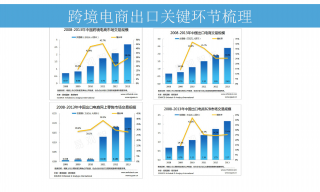
 2025-01-09 8
2025-01-09 8 -
跨境电商计划书VIP免费

 2025-01-09 13
2025-01-09 13 -
绿色食品电商平台项目计划书VIP免费

 2025-01-09 22
2025-01-09 22 -
农产品电子商务商业计划书VIP免费

 2025-01-09 8
2025-01-09 8 -
农村电商平台商业计划书VIP免费
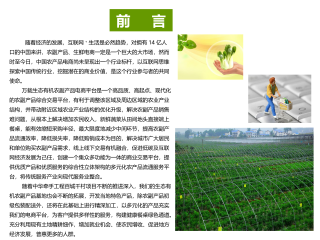
 2025-01-09 13
2025-01-09 13 -
生鲜商城平台商业计划书VIP免费
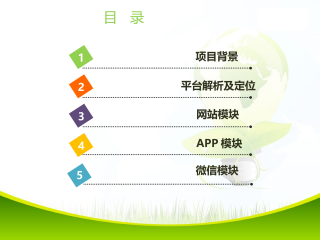
 2025-01-09 21
2025-01-09 21
作者:高德中
分类:高等教育资料
价格:15积分
属性:56 页
大小:1.27MB
格式:DOC
时间:2024-11-19


